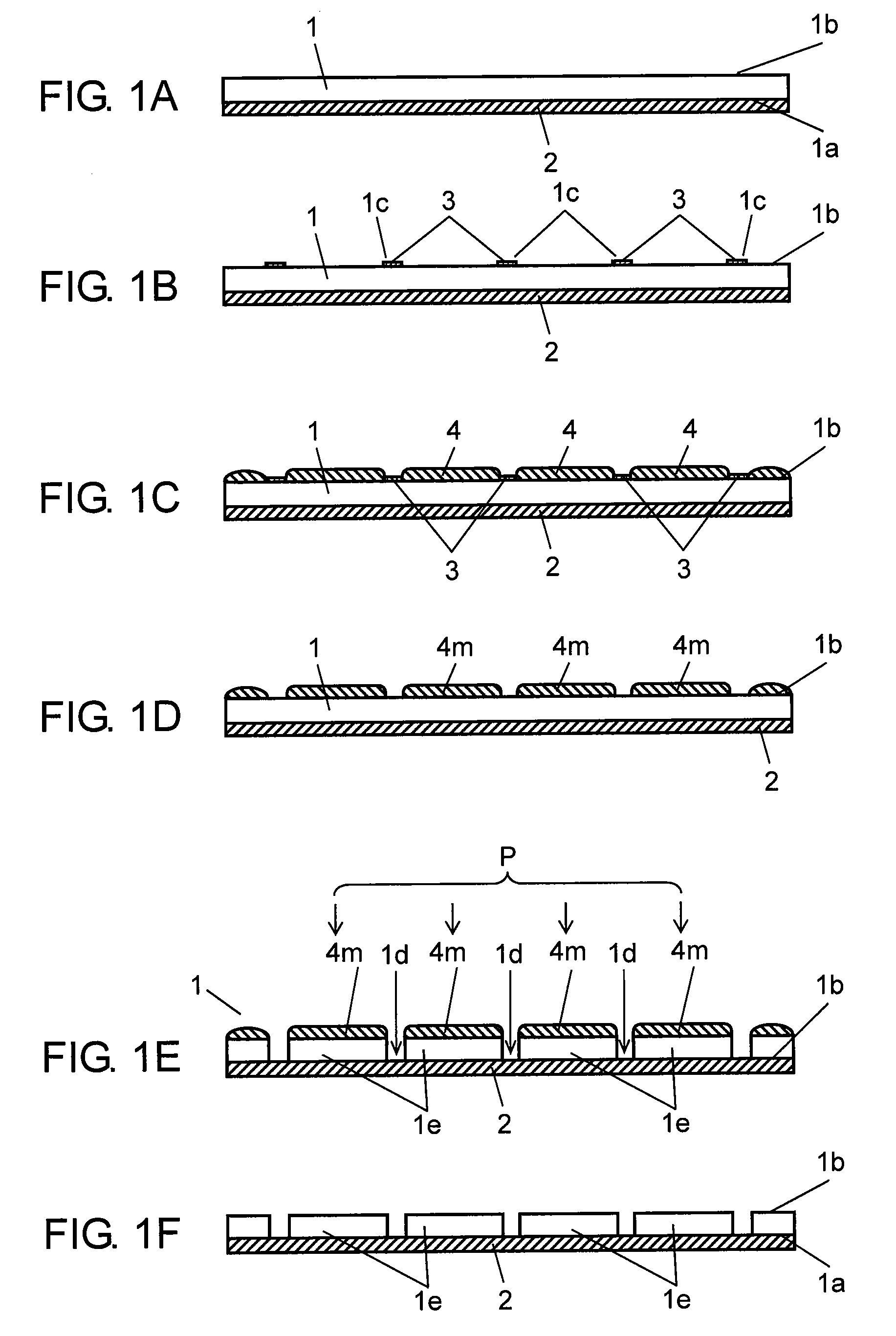Method for processing a substrate, method for manufacturing a semiconductor chip, and method for manufacturing a semiconductor chip having a resin adhesive layer
- Summary
- Abstract
- Description
- Claims
- Application Information
AI Technical Summary
Benefits of technology
Problems solved by technology
Method used
Image
Examples
first exemplary embodiment
[0049]FIGS. 1A to 1F show steps of a method for processing a substrate according to a first exemplary embodiment of the present invention. FIG. 2 is a plan view of a semiconductor wafer to be processed in the method. FIG. 3 is an enlarged view of a liquid-repellent pattern used in the method. FIG. 4 is an enlarged sectional view of the semiconductor wafer to be processed in the method. FIG. 5 is an enlarged view of a liquid resin and the liquid-repellent pattern used in the method. FIG. 6 is a sectional view of a resin layer and a mask used in the method.
[0050]First, the liquid-repellent pattern and the mask used in the present exemplary embodiment will be described as follows. The liquid-repellent pattern is a resin (a repellent agent) which repels a solvent in a liquid resin that will become the mask as described later. This pattern can be formed by printing a liquid containing a repellent agent dissolved in a solvent (a liquid-repellent liquid) in a predetermined pattern and then...
second exemplary embodiment
[0066]FIGS. 7A to 7F show steps of a method for manufacturing a semiconductor chip having a resin adhesive layer according to a second exemplary embodiment of the present invention. FIG. 8 is an enlarged view of a liquid-repellent pattern used in the method. FIG. 9 is an enlarged sectional view of a semiconductor wafer to be plasma diced in the method. FIGS. 10A to 10D show steps of bonding a semiconductor chip having a resin adhesive layer manufactured in the method.
[0067]The present second exemplary embodiment shows a method for manufacturing a semiconductor chip by applying the method for processing a substrate shown in the first exemplary embodiment. In the second exemplary embodiment, the resin film used as the mask for plasma etching in the first exemplary embodiment is used as a resin adhesive layer for die bonding. In FIGS. 7A to 9, like components are labeled with like reference numerals with respect to the first exemplary embodiment.
[0068]The liquid-repellent pattern to be...
PUM
 Login to View More
Login to View More Abstract
Description
Claims
Application Information
 Login to View More
Login to View More - R&D
- Intellectual Property
- Life Sciences
- Materials
- Tech Scout
- Unparalleled Data Quality
- Higher Quality Content
- 60% Fewer Hallucinations
Browse by: Latest US Patents, China's latest patents, Technical Efficacy Thesaurus, Application Domain, Technology Topic, Popular Technical Reports.
© 2025 PatSnap. All rights reserved.Legal|Privacy policy|Modern Slavery Act Transparency Statement|Sitemap|About US| Contact US: help@patsnap.com



